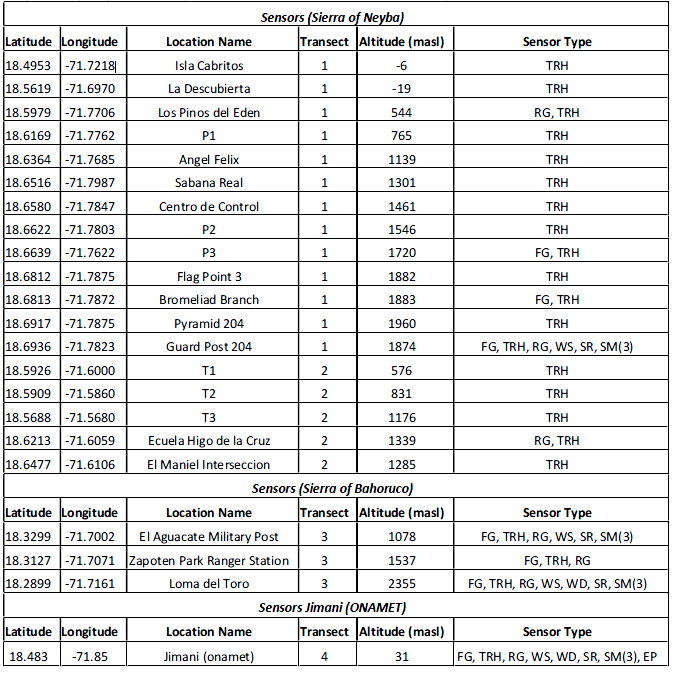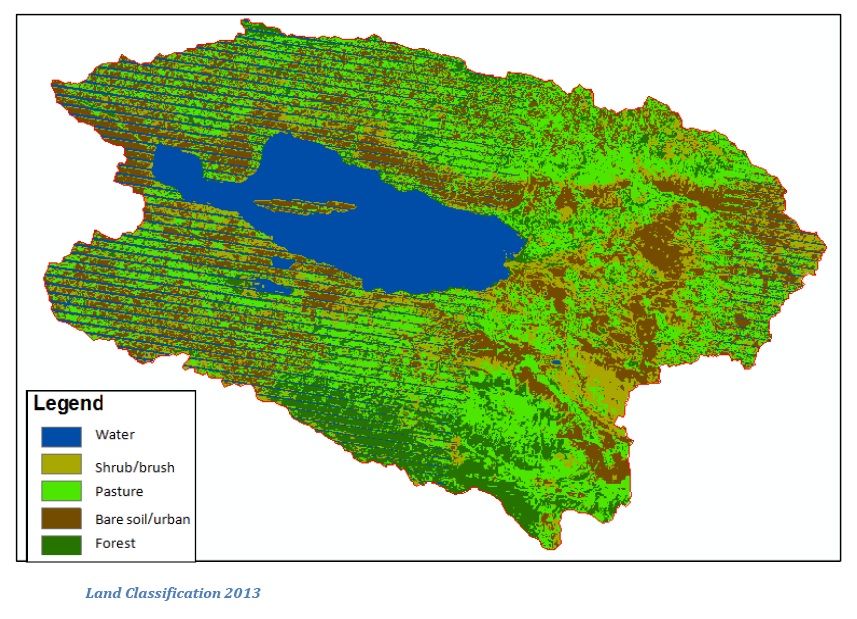Our methodology starts with a hypothesis. To test this hypothesis, we utilize our ground sensor network to collect data. Satellite imagery is used in conjunction with atmospheric and hydrological modeling to round out the analysis. Models and methods will be validated with data from the ground sensors.
The team of scientists and engineers from City College, INTEC and ONAMET has implemented an array of equipment around the lake to monitor and measure solar radiation, temperature, relative humidity, soil moisture, wind speed and direction, rainfall and fog presence with real time data and remote sensing. The analysis of the data considers changes in the hydroclimatology over the past thirty years by studying factors involving bathymetry, surface area delineation, land use, runoff and climate and hydrological modeling
- Ground Sensors Network
- Bathymetry
- Surface Area and Volume
- Land Use and Runoff
- Climate and Hydrological Modeling

The sensors have been set up at various locations around the lake. There are eighteen along the Sierra de Neyba, three along the Sierra de Bahoruco, and the main sensor, the Jimani Station, is located to the southwest of the lake. The Jimani station holds the largest record of historical data for rainfall in the area.
.
Bathymetry
In order to determine the volume of the lake we performed a bathymetric analysis using an 898c SI HUMMINGBIRD depth sounder, which uses sonar technology to locate and define structure, bottom contour and composition.

3D Animation
Lake Enriquillo is an endorheic lake with a large watershed. By analyzing the surface area of the lake over the past 30 years, we were able to identify the patterns of change over time. We used data from USGS Earth Explorer database, GPS, Landsat TM and ETM optical passive satellites and Arc GIS to plot to the area of the lake in 2010 and 2013. Then a comparison to historical data was made.











